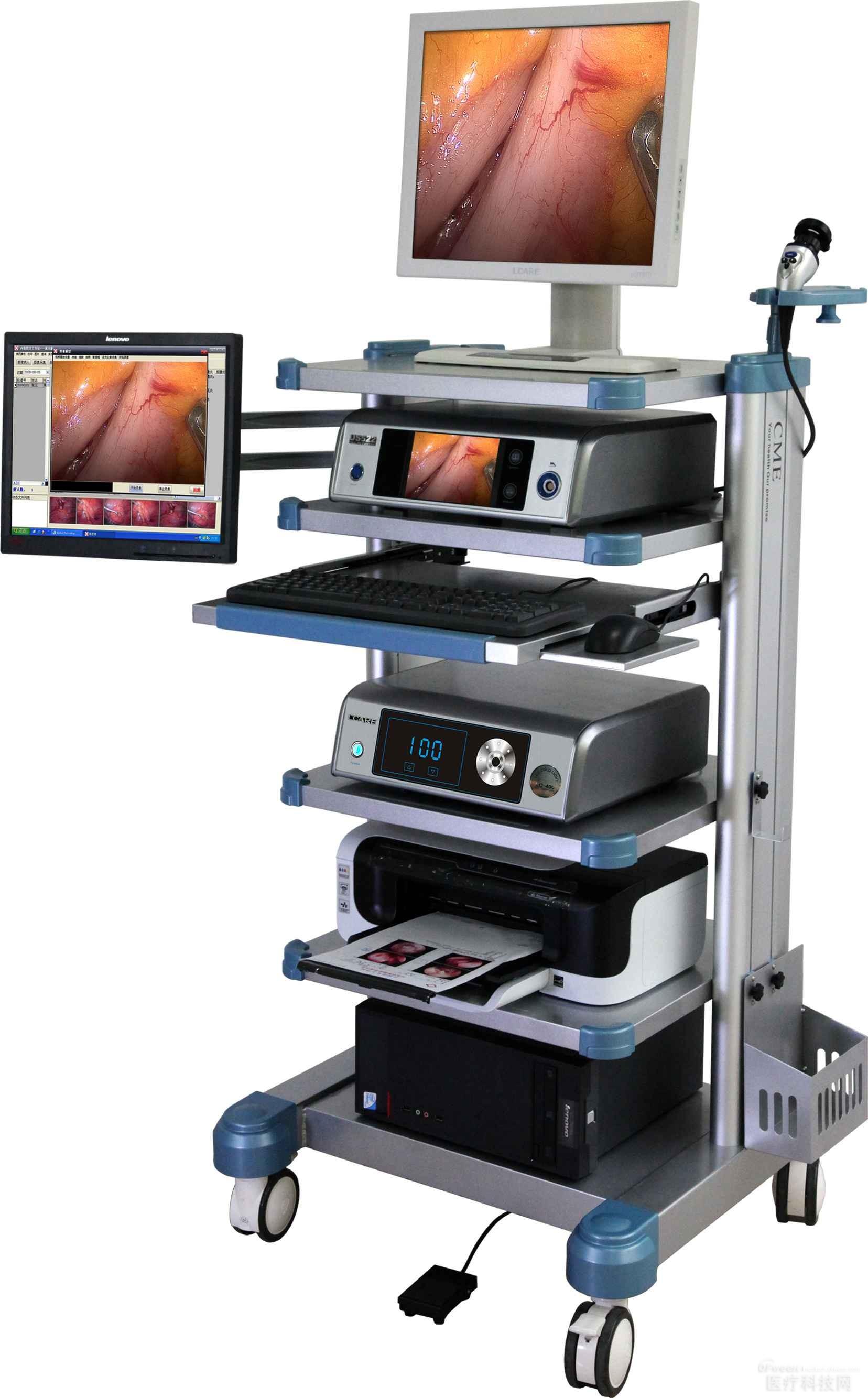The market for fiberscopes used very early is now basically replaced by electronic endoscopes. What are the differences between electronic endoscopes and fiberscopes? In terms of use and technology, what are the differences between electronic endoscopes and fiberscopes, although they are all endoscopes, they all play a big role in the field of medical examinations, but with the development of science and technology, electronics Endoscopic technology is almost mature, combined with the manufacture of other precision instruments, is developing towards miniaturization and intelligence.

Below we compare and distinguish from the structural principles of the two:
Fiber endoscope
The fiber endoscope system consists of an endoscope mirror body and a cold light source. There are two optical fiber bundles in the mirror body: a beam called a light beam, which is used to transmit the light generated by the cold light source to the surface of the object to be observed. The surface of the object to be observed is illuminated; the other is called an image beam, which is to arrange tens of thousands of optical fibers having a diameter of less than 1 micron in a row and row, one end is aligned with the eyepiece, and the other end is aligned with the object through the object lens. On the surface, the doctor can see the surface of the organ very intuitively through the eyepiece, which is convenient for timely and accurate diagnosis of the disease. For example, an endoscopist can observe an ulcer or swelling in the stomach to develop an optimal treatment plan.
The fiber bundle that conducts the image constitutes the core part of the fiber endoscope. It consists of tens of thousands of extremely fine glass fibers. According to the principle of total reflection of optics, all the glass fibers must be coated with a film with a lower refractive index. Ensure that all the light conducted by the inner core fiber is totally reflected. The transmission of a single fiber can only produce one spot. To see an image, a large number of fibers must be bundled. To transfer the image to the other end and make the same image, each fiber must be made in it. The two ends are arranged in the same position, called the guide beam. Fiberscopes typically have two fiberglass tubes through which light enters the body and the doctor observes through another tube or through a camera.
Electronic endoscope
With the development of electronics and digital video technology, electronic endoscopes appeared in the 1980s, so that they were no longer transmitted by optical fiber, but replaced by a photosensitive integrated circuit camera system, referred to as CCD. The CCD device of the miniature image sensor is a charge coupled device, which is a large-area array integrated circuit chip fabricated on a silicon substrate, and is an all-solid-state imaging device. The CCD chip can convert, store and transmit the scene image point by point, line by line and frame by frame through the CCD area array by means of the necessary optical system (endoscope objective lens) and dedicated peripheral driving and signal processing circuit. The output terminal generates a scene image related to the time series video signal and transmits it to the external circuit conversion processing system via the cable for sampling, A/D conversion, digital signal processing, D/A conversion, television signal coding, and finally restored to be available on the monitor. Observed scene images and related text information. The main display can not only display good image quality, strong brightness, but also large image, which can detect more small lesions, and the outer diameter of the electronic endoscope is finer, the image is clearer and more intuitive, and the operation is convenient. Some endoscopes even have microchip sensors that feed back the observed information to the computer. It not only obtains diagnostic information on the morphology of tissues and organs, but also measures various physiological functions of tissues and organs.
The essential difference between electronic endoscope and fiber endoscope
The structure of the electronic endoscope is basically the same as that of the fiber endoscope. It can be understood simply that the CCD is used instead of the guide beam, and many functions are unmatched by the fiber endoscope. The biggest difference between an electronic endoscope and a fiber endoscope is that it replaces the optical fiber image beam with a CCD device called a miniature image sensor.
During the use of the endoscope, the bending portion and the body insertion tube need to be repeatedly subjected to repeated bending movements. Each component inside the endoscope is subjected to various stresses such as bending, friction, and extrusion, and the fiber guide. The bundle is no exception. In terms of the ability to resist external stress, the fatigue strength of the cable is much greater than the fatigue strength of the optical glass fiber. If the factors affecting the service life of the endoscope are not considered at present, the theoretical service life of the electronic endoscope is much longer than that of the fiber endoscope only from the point that the optical fiber is easily broken under the action of the external force. Another technical problem is the image clarity of the endoscope or the resolution of the endoscope. As far as the current mature technology is concerned, the resolution of the fiber endoscope is far less than that of the electronic endoscope. The resolution depends on the diameter of the monofilament of the optical fiber, and the space for increasing the resolution by reducing the diameter of the monofilament of the optical fiber is already quite small. Some manufacturers' products can be said to be close to the limit, which is only equivalent to the early low-end electronic endoscope. s level.
In summary, the fiberscope has almost reached its technical limit. At present, it has been eliminated by the market without breaking the technical bottleneck. The use of electronic endoscopes has become an objective requirement of the market.
JIANGSU CLS TECHNOLOGY CORP.LTD , https://www.js-cls.com